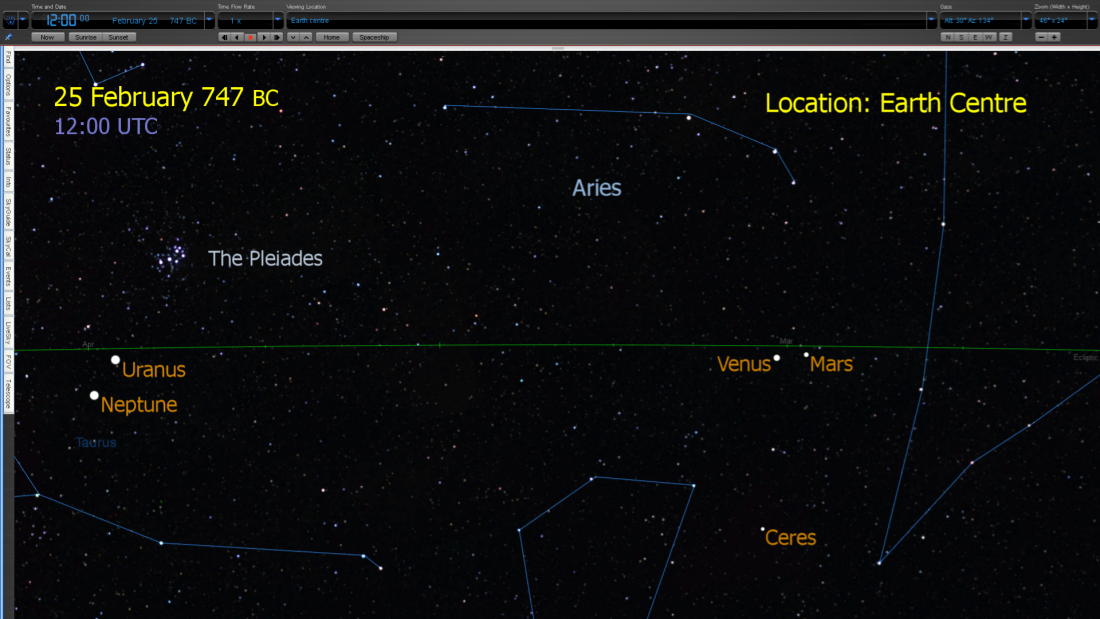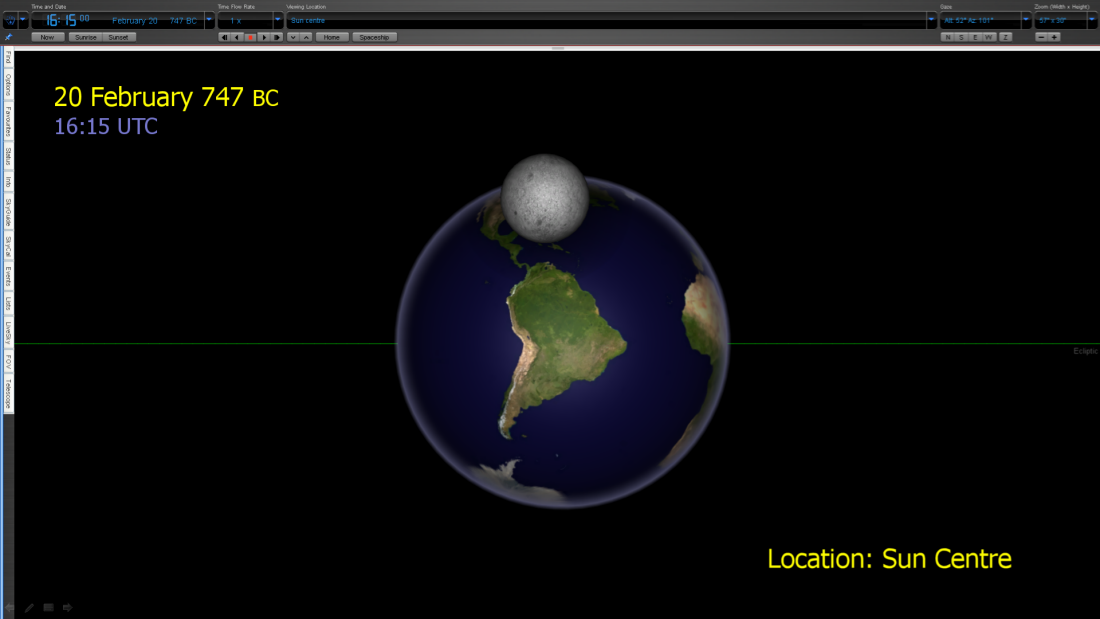The Mid-8th Century BC Celestial Upheaval
Following the Bronze Age Collapse event of 1194 BC, the next great global disaster to occur happened at the mid point of the 8th century BC. An event which is confirmed by both geological and archaeological evidence, as well as calendrical evidence. The former associated with a great earthquake dated approximately 750 BC; the latter linked to certain special calendar reforms, specifically in 747 BC, both within the Old and the New World:
The Ancient Dead Sea Transform Fault Earthquake
Around 750 BC, a massive earthquake struck the region surrounding the Dead Sea Transform Fault, a major tectonic boundary between the African and Arabian plates. This fault system, running through the Levant, has been responsible for numerous powerful earthquakes throughout history.
According to estimates, the 750 BC event had a magnitude somewhere between 7.5 and 8.0, making it one of the most destructive earthquakes of its time; the event itself dated using a combination of geological and archaeological evidence. Most notably the sediment layers near the Dead Sea, which were found to contain obvious signs of disruption, such as deformed strata and liquefaction features, all of which were analysed using radiocarbon dating.
To add to this, archaeological findings from sites like Hazor and Gezer in modern-day Israel uncovered widespread destruction layers aligned with this period, helping to pinpoint the timing of the event still further.
In terms of actual location, the earthquake would have affected a vast area, including parts of modern-day Israel, Jordan, Lebanon, and Syria. Cities like Jericho, Damascus, and Megiddo most likely suffered severe damage, with collapsed buildings, compromised water sources, and landslides. Such widespread destruction would have disrupted trade routes, agriculture, and daily life, leaving a lasting mark on the region’s history and collective memory.
The Era of Nabonassar & Ancient Calendar Reforms
Further to the above, one may also note that in 747 BC, a remarkable shift occurred in the calendar systems of various ancient civilisations. What marked the start of the "Era of Nabonassar," named after the Babylonian king Nabonassar. A new era that became the cornerstone for astronomical and historical reckoning.
The precise date of this change was 26 February 747 BC, as noted by Immanuel Velikovsky in his book Worlds in Collision (1950), who linked it to a series of extraordinary events that reshaped the ancient world, including ‘The New World.’ Indeed, the ancient inhabitants of Mexico celebrated their New Year on a day corresponding to this very date, suggesting a connection between their calendar and this global shift.
In his published works Worlds in Collision and Ages in Chaos, Velikovsky argued that these calendar reforms were not mere administrative adjustments, but the result of profound celestial upheaval. He proposed that around this time, the Earth experienced dramatic cosmic disturbances—such as planetary alignments or close encounters with other celestial bodies.
Velikovsky believed that these events triggered a whole series of natural disasters, including earthquakes. One of which was the earthquake mentioned by the prophet Amos in the Bible (Amos 1:1). This effectively being one and the same as the Dead Sea Transform Fault earthquake, as detailed in the previous section. What forced both the Old and the New World to recalibrate their calendars, marking the end of one world age, and the beginning of another.
A Disaster Alignment
What is so amazing about Velikovsky’s work, is that he nails the critical date with precision. The only problem that he had, was that in 1950, he was not able to do something so easily achievable today: turn on a personal computer with some advanced astronomy software, and wind the solar system back in time to the key date that he had identified. If he had been able to do this, he would have been confronted with a very astounding planetary configuration.
In this regard then, one may take the date in question: 26 February 747 BC, as being the first day of the new era, and thus consequently, the day prior, 25 February 747 BC, would be the last day of the previous era, or rather world age. It is the latter date upon which one must focus.
A top-down view of the solar system upon this date reveals something quite profound. A four body planetary alignment involving Ceres, Mars, Venus and the Earth (NB; For an important note on modelling the orbit of Ceres, see note [1] in the Notes section at the bottom of this article):

Switching location to the centre of the Earth to look down the line of the conjunction, one can see that it is close to the right edge of Aries. Further to this though, one can see something else of interest over to the left. Both Uranus and Neptune are close together:

Viewed from the centre of the Sun (below), things are even more interesting:

As shown, one can see a highly accurate alignment between the Sun, Uranus and Neptune, almost dead-on 5° from the Pleiades star group.
That is not all however. Five days earlier, on 20 February 747 BC, there is a total solar eclipse, as would have been observed over North America at the time:

Yet again, another instance of a complex celestial configuration involving multiple alignments - one of which is a four body alignment - and with a Pleiades connection. And all within a few days of an accurate eclipse.
There can be no doubt that this was indeed a bone fide end of age alignment which produced significant earthbound upheaval. Primarily of a seismic nature, according to the reports of the time.
Foreknowledge of disaster
Should there be the slightest doubt over the exact day of disaster, a very elegant mathematical connection between The Exodus date (28 March 1457 BC, as detailed in a previous article) and the 25 February 747 BC date, removes it entirely.
Nothing less than decisive confirmation that somebody during this time was indeed using a 360-day calendar count to target the 747 BC alignment, even centuries in advance. The count in question being set into motion following a critical initial adjustment from the aforementioned Exodus date.
Here then, one may be astounded yet again to find that the key initial adjustment employed to target the 747 BC event, was exactly 96 days. The very same adjustment used respecting the 3153 BC alignment to target the 1970 BC alignment. (Recall: 96 days + exactly 432000 days, or 1200 units of 360 days).
Consider the following:
The Exodus Alignment: 28 March 1457 BC
+ 96 days = 2 July 1457 BC
From this date, one then begins to count cycles of 360 days. In this case exactly 720 such cycles:
720 × 360 = 259200 days
Therefore: 2 July 1457 BC
+ 259200 days = 25 February 747 BC: Alignment day
With such precise targeting involving such elegant mathematics, how could such a count not have been in use?
A Short Interlude Before The Next Disaster
Following this alignment, the next great conjunction pattern to severely effect the Earth was only some 60 years later. A very special celestial configuration with a very prominent Greek mythological story behind it. The subject of the next article in this series:
Next: The Story of Phaethon
Back to: Signs of the Times Menu
Notes
[1] Concerning modelling the dwarf planet Ceres, I use Starry Night Pro 6.0 software.
See this article for more information: Ceres Orbital Solution Considerations